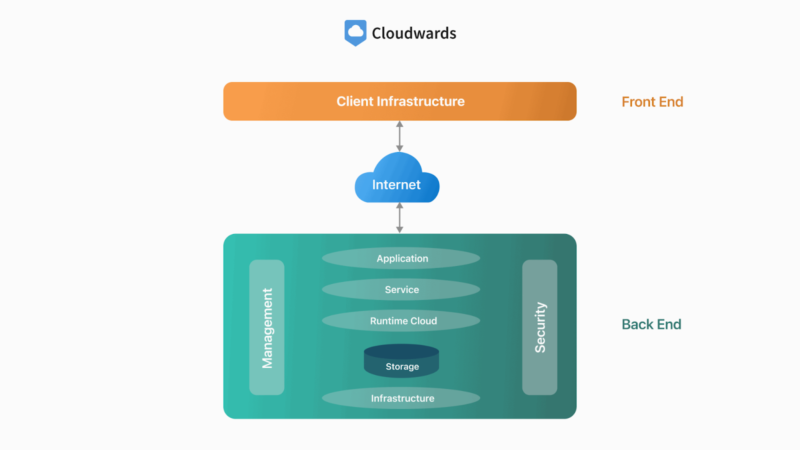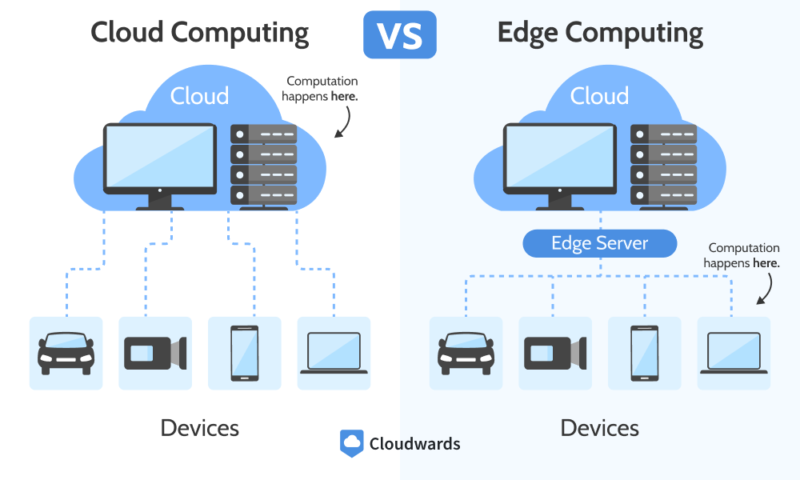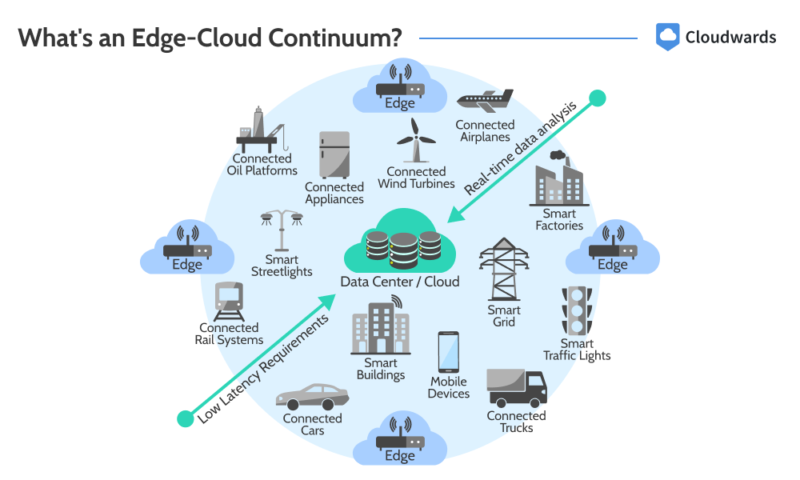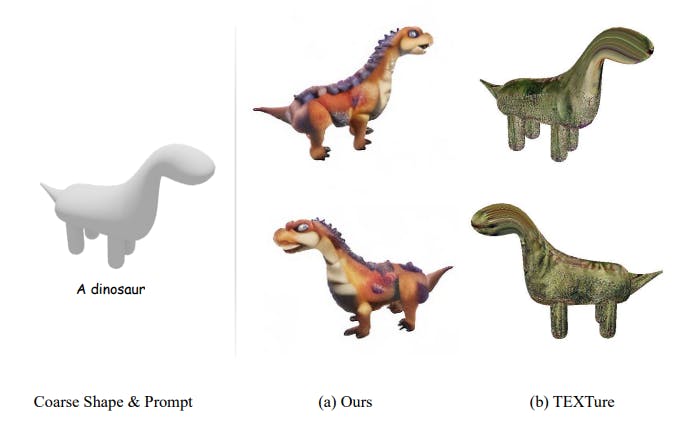In this edge computing vs cloud computing comparison, we explore the definitions of edge computing and cloud computing, looking into their similarities, key differences, advantages, downsides and how they work.
Cloud computing offers a centralized cluster of computing power over the internet, while edge computing brings computing power closer to data sources. That said, both models are intertwined and are typically used together — though they also have some key differences that underline how both computing models can be combined.
What Is Cloud Computing?
Cloud computing is a computing model that offers access to computing resources over a network — usually the internet. It allows individuals or organizations access to computing hardware and software without having to invest heavily. It also offers scalable and reliable infrastructure without the need for extensive expertise.
How Does Cloud Computing Work?
Cloud computing works through the remote use of servers hosted by third-party companies called cloud providers. These cloud service providers house a large number of computing resources in buildings called data centers and allow access to these computing resources over a network.
- Demystify cloud storage terminology and key concepts in plain language
- Discover easy-to-implement techniques to securely backup and sync your data across devices
- Learn money-saving strategies to optimize your cloud storage costs and usage

Public cloud is the most adopted cloud computing model,
and it uses the internet for data transfer.
Cloud providers handle the physical security of and upgrades to the computing resources’ underlying hardware. The user, on the other hand, manages their own usage of those resources and typically pays for resources based on usage.
Cloud Computing Advantages
Cloud computing advantages include pay-as-you-go pricing, scalability, reliability, accessibility, collaboration and innovation.
- Pay-as-you-go pricing: Cloud computing uses a pay-as-you-go pricing system, so you pay only for what you use. As such, your computing expenditure is more cost-effective, and you do not have to invest in the expensive upfront costs of on-premises computing.
- Scalability: Cloud computing platforms are built on a large amount of hardware, so they have the resources to scale up or down with changing workload demands. This is unlike traditional computing, where you have to buy new resources when workloads exceed computing capacity and those resources remain unused when workload demands drop.
- Reliability: Thanks to its redundancy — multiple data centers in various locations around the world — cloud infrastructure provides more reliability than on-premises computing.
- Accessibility: In the public cloud computing model, computing resources are available over the internet, so more people have access to high-end computing resources regardless of their location.
- Collaboration: Since cloud computing involves remote access to computing resources, individuals from different locations around the world can get together and collaborate much more easily.
- Innovation: Instead of having to go through the hurdles of financing and procuring advanced hardware and software, the cloud grants you on-demand access to these technologies, encouraging innovation.
Cloud Computing Downsides
Cloud computing downsides include its limited control, increased attack surface, network requirements and cost management.
- Limited control: In cloud computing, the cloud provider controls the underlying hardware and gives you limited control. Therefore, you’re mostly constrained by the provider’s underlying configurations.
- Increased attack surface: Cloud computing involves transferring data over the internet, and with internet exposure comes an increased attack surface. Since the internet is a public network, it is accessible to anyone, including those with malicious intentions.
- Network requirements: When using the cloud, you need internet access. However, beyond simply having internet access, you need an internet connection with sufficient bandwidth. If your bandwidth is insufficient, you’ll experience speed and performance issues.
- Cost management: The components of your total cloud spending can become complex, leaving you unable to manage your costs properly. Consequently, you may rake in unexpected and unwanted costs.
What Is Edge Computing?
Edge computing is an approach to computing in which workloads are hosted closer to data sources. It prioritizes proximity to data sources because of the associated low latency and overall enhanced performance. Of course, with these benefits come real-time results, reliability and increased efficiency.
How Does Edge Computing Work?
Edge devices process workloads at the edge of a computing network, such as computing resources closer to data sources or in remote locations from a central data center. The design aims to move workloads away from the center of the network for enhanced speed and performance.
Data shared between the target and the edge are typically processed at the edge. However, some data may be transmitted to a central cloud when necessary.

Edge computing is more distributed than cloud computing and sits at a layer consisting of billions of devices.
An example of edge computing is an inventory management system that monitors and processes stock-level data on local computing resources (the edge) and sends an alert to a central data center only when stock levels are critical.
Edge Computing Advantages
Edge computing advantages include low latency, real-time data processing, reduced attack surface, reduced costs and network reliability.
- Low latency: With computing resources being closer to their targets, data travels shorter distances in edge computing. As a result, you have lower latency.
- Real-time data processing: With data traveling shorter distances or being processed locally, you get data that’s output almost as soon as it’s input.
- Reduced attack surface: When traveling to central data centers, data goes through multiple points of contact, increasing the attack surface. With edge computing, data does not travel at all or travels through fewer points, reducing its attack surface and enhancing privacy.
- Reduced costs: Edge computing reduces the need for broadband internet connectivity, which comes with extra costs.
- Network reliability: With data being processed locally on smart devices or in proximal data centers, network disruptions would not disrupt edge computing the same way it would a centralized system. Therefore, you generally experience more reliability.
Edge Computing Downsides
Edge computing downsides include limited scalability and security, and the need for storage capacity.
- Limited scalability: Edge computing resources do not have the same capacity to scale as centralized systems. Therefore, they could become unable to handle increasing workloads. However, some systems discard unneeded data, reducing the need for scalability.
- Security: Some devices, particularly IoT devices, are not designed with robust security measures. As such, they’re prone to security attacks, which can expose edge computing networks.
- Need for storage capacity: Since edge computing resources store and process data locally where storage capacity is limited, storage usage can increase pretty fast. Therefore, there’s a need for a large storage capacity, which could come at a significant cost.
What’s the Relationship Between Edge Computing & Cloud Computing?
Edge computing and cloud computing systems are mutually beneficial; edge computing extends cloud computing’s capabilities closer to the data source, while cloud computing solutions offer enormous processing power to augment edge computing resources.
In other words, edge computing technology offers cloud computing the ability to perform low-latency data processing by being closer to the data source. In return, cloud computing resources offer edge computing massive computational power for advanced data processing.
What’s an Edge-Cloud Continuum?
The edge-cloud continuum is a framework that distributes workloads between the edge and the cloud based on each workload’s requirements. It is a form of a hybrid cloud deployment model that allows edge devices — such as IoT devices and autonomous vehicles — to run workloads in the cloud and on edge servers as needed.
Edge Computing vs Cloud Computing: Key Differences
The key differences between edge computing vs cloud computing include reliability, scalability, latency, processing speed and security.
| Features: | Edge Computing | Cloud Computing |
|---|---|---|
| Reliability | Edge computing offers network reliability, as it processes data on available nodes during partial network failures and locally during extensive network failures. | Cloud computing offers data reliability; it has the resources to make data redundant or available across multiple data centers and regions. This prevents a single point of failure, ensuring data is almost always accessible, even during system failures. |
| Scalability | Resources in edge data centers are limited. Therefore, edge computing does not scale as well as cloud computing. | Cloud computing platforms are built on massive underlying infrastructure, making it possible for them to scale up and handle high-volume workloads. This is why workloads that need advanced data processing are transferred from the edge to the cloud. |
| Latency | Thanks to its closeness to the data source, edge computing experiences shorter delays before initiating data transfers. This is why it is a low-latency model. | Though cloud computing services like peer-to-peer networks can enhance network latency, traditional cloud computing’s latency is higher than that of edge computing. |
| Processing Speed | Edge computing’s low latency and proximity to data sources allow for processing data in real time. | Processing speed in cloud computing varies with factors like network bandwidth, service type and proximity. |
| Security | Edge computing offers enhanced data security and privacy by allowing minimal public exposure, thus reducing the attack surface.
However, some edge devices — especially IoT devices — lack basic security features, such as encryption. |
Cloud computing providers invest heavily in cutting-edge security technologies, offering enterprise-grade protection against various threats. |

When necessary, the edge transfers complex workloads with medium to low latency needs to the cloud.
Similarities Between Edge Computing & Cloud Computing
The similarities between edge computing and cloud computing include pay-as-you-go pricing, streamlined analytics and remote data access.
- Pay-as-you-go pricing: Both cloud computing and edge computing charge based on your usage.
- Streamlined analytics: Both models rent out high-end computing resources for data analytics, lowering the infrastructural barriers, especially for big data analytics. In other words, with edge computing and cloud computing, you do not have to invest heavily in hardware and software to get into analytics.
- Remote data access: Cloud computing and edge computing allow access to data without physically interacting with compute resources on remote servers.
Cloud Computing vs Edge Computing: Use Case Examples
Though both models can be used together, cloud computing and edge computing have distinct use cases. In this table, we’ll break down when to use cloud computing vs edge computing.
| Cloud Computing | Edge Computing |
|---|---|
| Use cloud computing when you need collaborative access to data from locations across various regions or around the world. | Use edge computing where low latency is essential, such as on smart home devices and with augmented reality. |
| Cloud computing is ideal for backups, archiving and disaster recovery. | Edge computing is essential when you need real-time data outputs. |
| Use cloud computing when you want scalable file, block or object storage. | Use edge computing to ensure data privacy while transferring sensitive data — like healthcare data — over long distances. |
Cloud Computing Use Case Example
Cloud computing offers flexible backup options, allowing you to scale up as your backup grows. It offers a different environment for your data, preventing a single point of failure. For instance, if you own a streaming platform and are looking for an ideal media storage solution, cloud storage options offer a combination of reliability and scalability.
Edge Computing Use Case Example
Edge computing is useful on mobile devices where real-time processing of biometric data and healthcare information is essential. In other words, edge computing is the reason a smartwatch can detect irregular vital signs and alert emergency services in real time. It’s also the reason why smartphones can scan and process our biometric data almost immediately.
Final Thoughts
Edge computing aims to achieve low latency by ensuring proximity between data processing resources and data sources. On the other hand, cloud computing offers remote access to large-scale computing resources. When combined, edge computing brings low latency to cloud computing, while cloud computing augments the computing power of edge computing.
What do you think about the distinction between cloud computing and edge computing? Do you think both models should be merged and optimized as an even more robust model? Share your thoughts with us in the comments. Thank you for reading.
FAQ: Edge Computing vs Cloud Computing Comparison
-
The primary difference between an edge platform and a cloud platform is the proximity to data sources and end users. Whereas edge platforms are smaller data centers closer to the end users and data sources, cloud platforms are larger data centers with extensive computing resources and no requirement to be close to end users and data sources.
-
The difference between cloud functions and edge functions is that cloud functions run in the cloud, while edge functions are executed at the edge — close to the data source.
-
Edge computing is not a cloud service, but some cloud service providers offer edge computing services.








